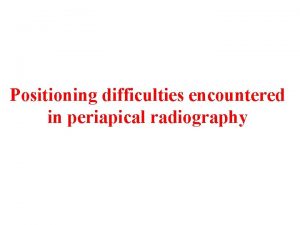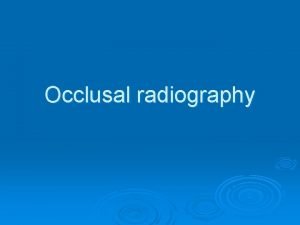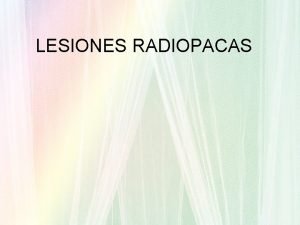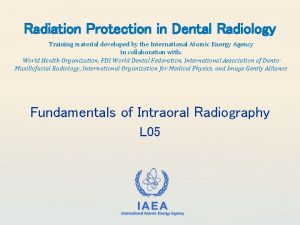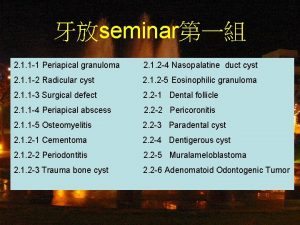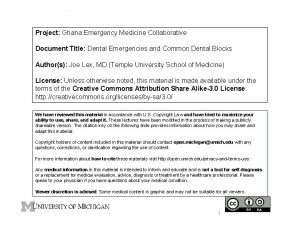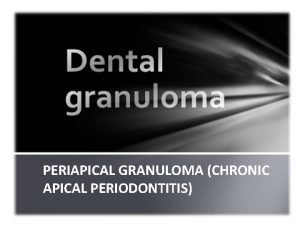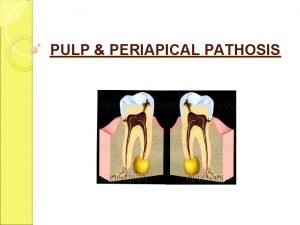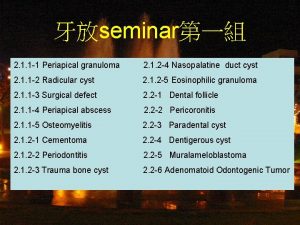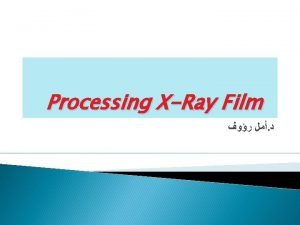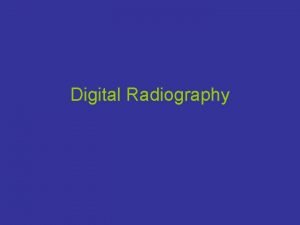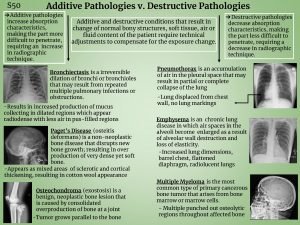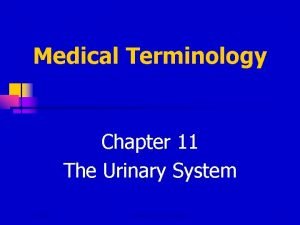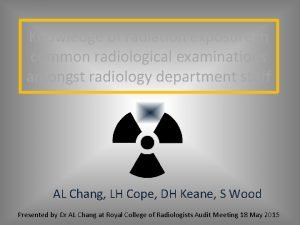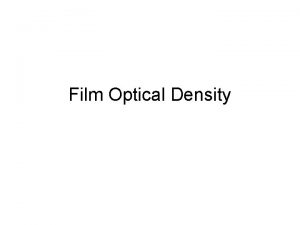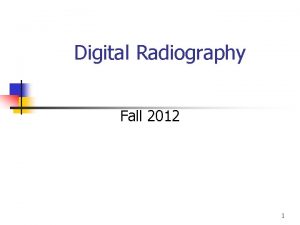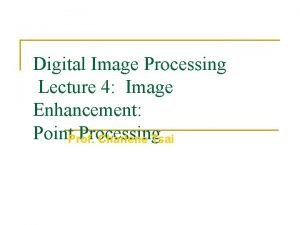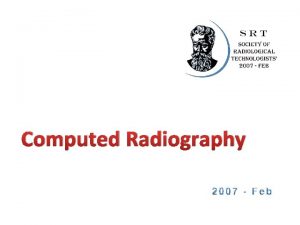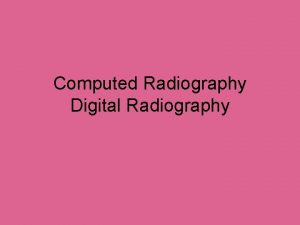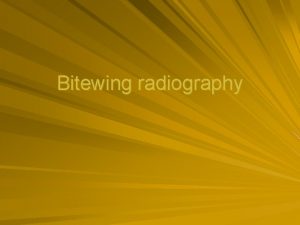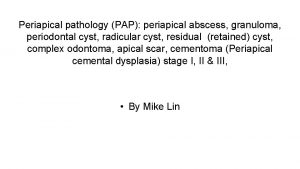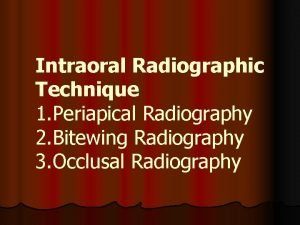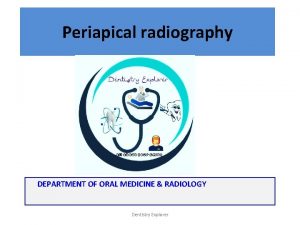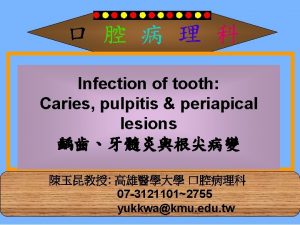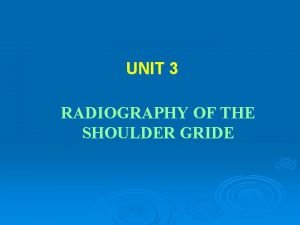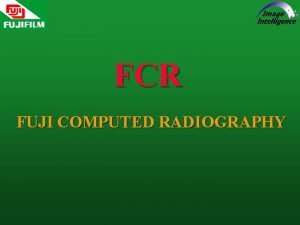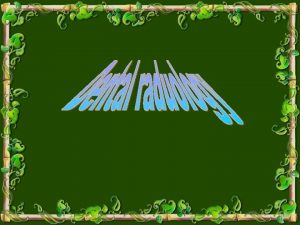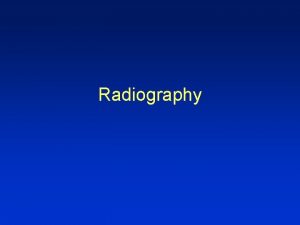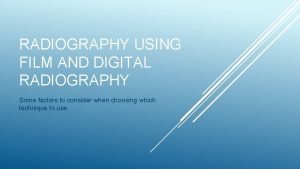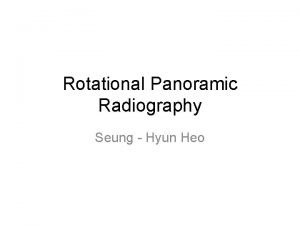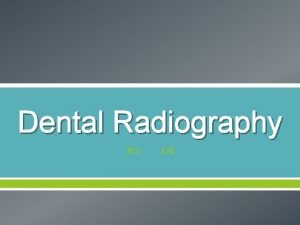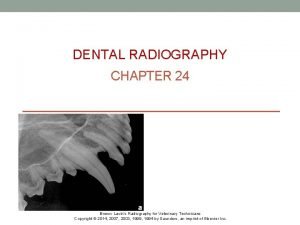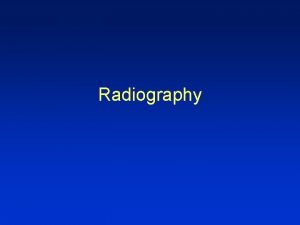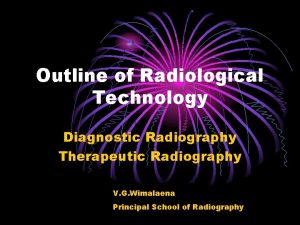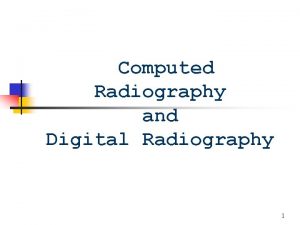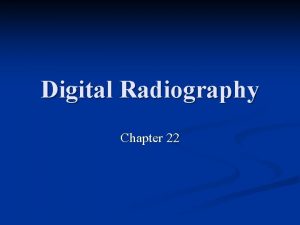Periapical radiography Main indications Detection of periapical infection























- Slides: 23

Periapical radiography

Main indications Ø Detection of periapical infection Ø Assessment of the periodontal status Ø After trauma to the teeth and associated alveolar bone Ø Assessment of the presence and position of unerupted teeth

Ø During endodontics Ø Preoperative assessment and postoperative appraisal of apical surgery Ø Detailed evaluation of bone lesions Ø Implant evaluation

Ideal positioning requirements Ø The tooth under investigation and the film packet should be in contact or , if not feasible, as close as possible Ø The tooth and the film packet should be parallel to one another

Ø The film packet should be positioned with its long axis vertically for incisors and canines, and horizontally for premolars and molars with sufficient film beyond the apices to record the apical tissues The positioning should be reproducible

Ø The X-ray tubehead should be positioned so that the beam meets the tooth and the film at right angles in both the vertical and the horizontal planes


Positioning of the instrument


Theoretical basis of the bisected angle technique







Advantages of the paralleling technique Ø Geometrically accurate images are produced with little magnification, foreshortening or elongation Ø The shadow of the zygomatic buttress appears above the apices of the molar teeth

Ø The horizontal and vertical angulations of the X-ray tubehead are automatically determined by the positioning device Ø There is no cone cutting Ø The radiographs are reproducible Ø The technique is useful for some patients with disabilities

Disadvantages of the paralleling technique Ø Positioning of the film packet for the posterior teeth can cause gagging Ø The anatomy of the mouth sometimes makes the technique imposible, e. g a shallow, flat palate Ø The apices of the teeth can sometimes appear very near the edge of the film

Ø The technique cannot be performed satisfactory using a short focal spot to skin distance because of the resultant magnification Ø The holders need to be autoclavable Ø Positioning the holders in the lower third molar region can be very difficult

Advantages of the bisected angle technique Ø Positioning of the film packet is relatively simple and comfortable for the patient Ø If the angulations are assessed correctly the image should be diagnosticable

Disadvantages Ø Incorrect vertical angulation results in foreshortening or elongation of the image Ø The shadow of the zygomatic buttress overlies the roots of the upper molars Ø Incorrect horizontal angulation results in overlapping of the crowns or cone cutting

Ø The periodontal bone levels are poorly shown Ø It is not possible to obtain reproducible views Ø The buccal roots of the maxillary premolars and molars are foreshortened
 Placing reflex
Placing reflex Occlusal oblique
Occlusal oblique Radiopaco radiolucido radiotransparente
Radiopaco radiolucido radiotransparente Definition of periradicular disease
Definition of periradicular disease Double exposure xray
Double exposure xray Radiolucence
Radiolucence Periapical
Periapical Periapical granuloma
Periapical granuloma Pulpitis classification
Pulpitis classification Periapical
Periapical Periapical granuloma
Periapical granuloma Latent image formation in radiography
Latent image formation in radiography Sulphonal casset
Sulphonal casset Soot and whitewash radiography
Soot and whitewash radiography Additive and subtractive pathology in all body system
Additive and subtractive pathology in all body system Uretorocele
Uretorocele Limitations of radiography
Limitations of radiography Rni radiography
Rni radiography Optical density in radiography
Optical density in radiography Filmless radiography
Filmless radiography Extraoral radiography ppt
Extraoral radiography ppt Mask mode radiography
Mask mode radiography Industrial radiography accidents
Industrial radiography accidents Radiography safety precautions
Radiography safety precautions
